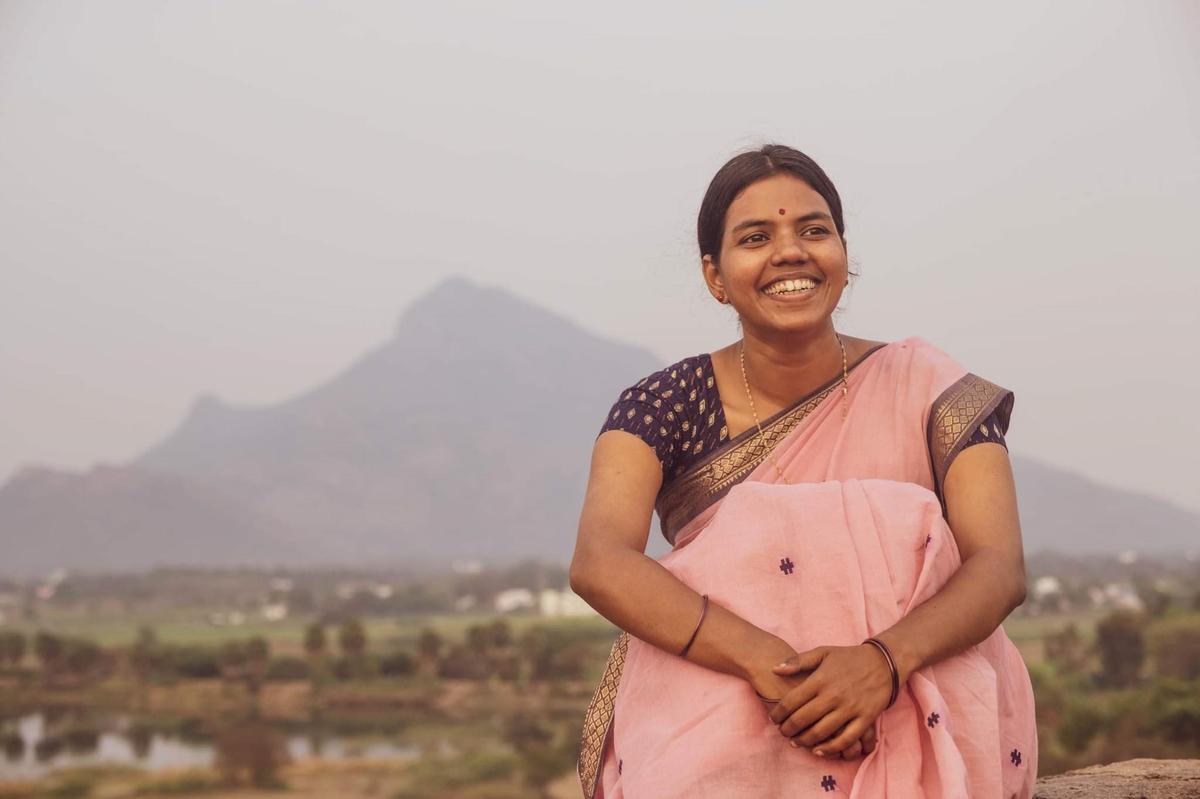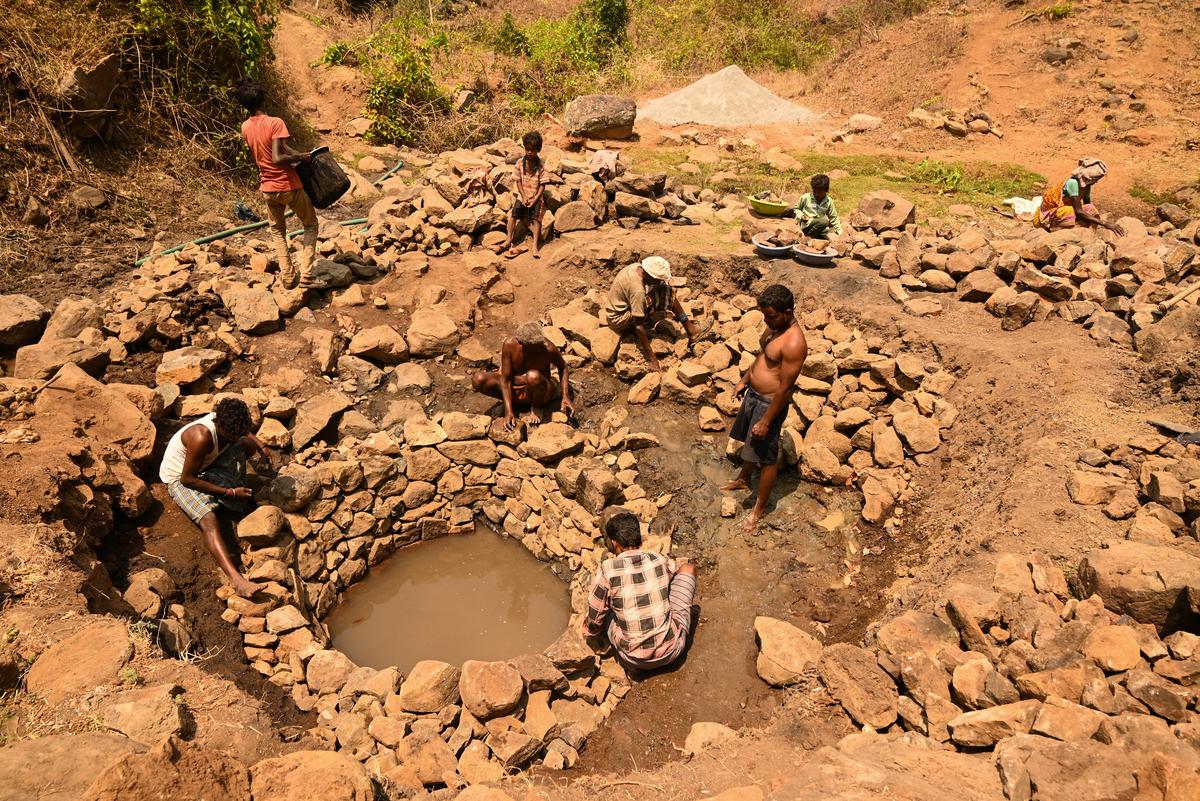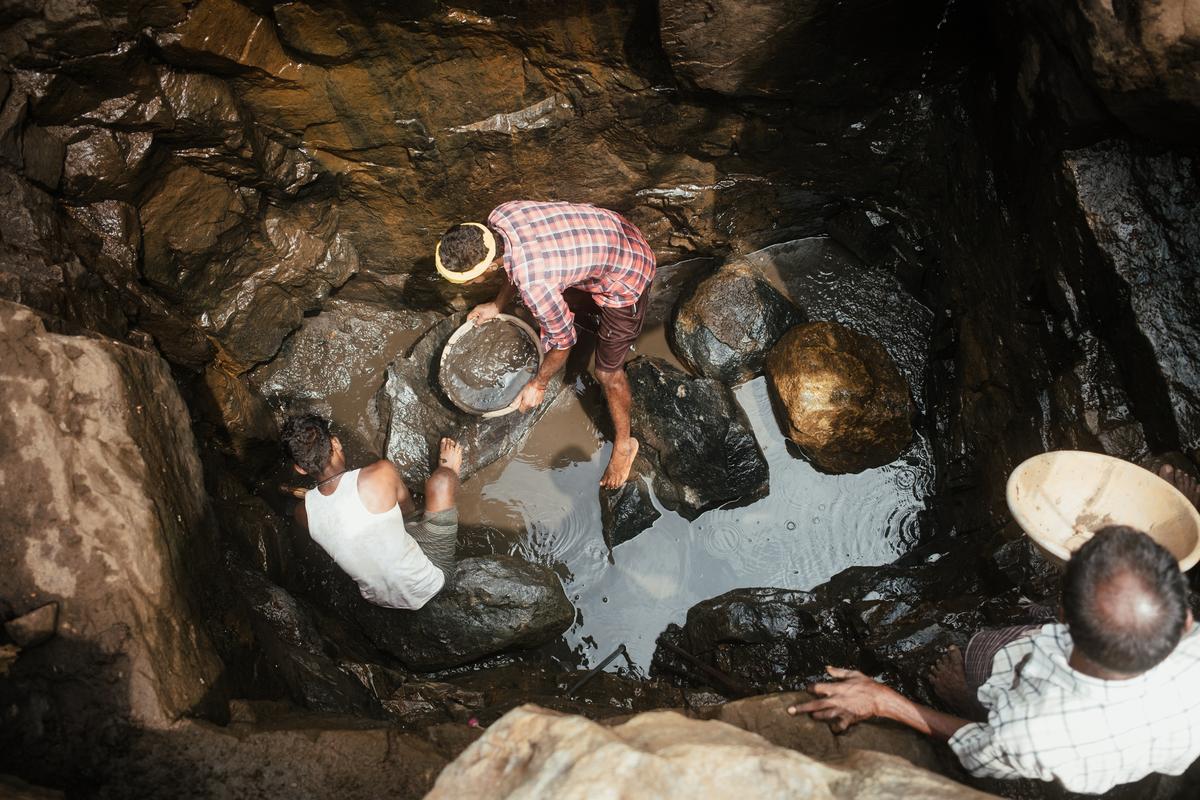Almost everywhere in the world, it is women who take it upon themselves to fetch water, often travelling great distances by foot.
| Photo Credit: M. Saranraj
We trek up a trail, on a hillock composed of damp, loose rock that cuts into finger millet fields, to reach Giri’s tile-roofed home. It is within the many folds of Erode district’s Bargur hills of the Western Ghats in Tamil Nadu. He is not home, but his goats are. “Women walk up this stretch with a pot of water balanced on their hips up to 10 times a day,” points out Madhu Manjari Selvaraj when we pause to catch our breaths near the goat shed. The world over, it is women who take it upon themselves to fetch water. It is no different in the mountain village of Solakanai.
Here, women walk to a mountain stream for water every day. A few metres from the stream is their village well that, until a few months ago, was covered with boulders and sediment. It now brims with water and the promise of a new beginning after Manjari and her team from the Public Well Revival Movement took it into their fold. A handful of men used rocks sourced from the nearby hills to build a wall against the flow of the stream, after which the well was dredged, with a wall constructed around it. It was opened last month.
The initiative, an off-shoot of the Tamil Nadu-based Cuckoo Movement for Children, which strives to make childhood meaningful, has revived 15 defunct wells across the state over the past four years with crowd-funding. It is helmed by Manjari and her team that includes M. Mari Muthu, K. Rahuraman, V. Muthu, C. Bala Gurunathan, A. Arun Kumar and S. Mohan. Manjari, an architect, recently won the Doshi We Know Fellowship 2024-25 for her work.

Architect Madhu Manjari Selvaraj of the Public Well Revival Movement.
| Photo Credit:
Vinodh Baluchamy
With a little help from the locals
“Wells become unusable for various reasons,” says Manjari. “They may be closed due to conflicts arising out of caste tensions; due to sand or rock filling them up over the years or simply because people have forgotten their existence owing to piped water connections.”
But the earth remembers. Despite being forgotten, water continues to spring forth from a well. The Public Well Revival Movement identifies such wells, reminding people in the village or town of its existence. After necessary permissions from local authorities, citizen’s collectives, and the Forest Department are sought, it sets out to revive them with help from the locals themselves.
Wells, says Manjari, are sustainable sources of water. While waterbodies such as ponds and lakes provide surface water, wells store groundwater and are hence able to keep regenerating. “A well connects four to five aquifers,” she points out.

A well being dredged in Agnibaavi, Erode district.
| Photo Credit:
M. Saranraj
The first well the group dredged was in Puliyanur village near Tiruvannamalai. The team that usually camps in local government schools or temples spent almost three months in Puliyanur. At the end of the first month, they saw the first traces of clear water. The sun’s reflection gleamed gold in it: it was a moment that filled the team with immense faith in their movement. It soon filled up and the villagers came to it in droves, pots in hand, unable to believe their dilapidated well was alive.
The team then took up a well in Dhuruvam village in Kallakurichi district. “Women there were walking up to seven kilometres to reach a quarry to fetch water,” says Manjari. The team later headed to Naickanoor village in Krishnagiri district, where they spent four months dredging a 28-feet-deep well. “A 90-year-old resident of the village would sit on his haunches by the side to observe us at work every day,” she recalls. “When we got to the 27th feet, he said we would reach water after exactly one more foot. He then told us his father had contributed to digging the well 40 years ago.”

Well revival in progress in Solakanai village in Erode district, Tamil Nadu.
| Photo Credit:
Balaji Maheshwar
Hope in a drop
There are 2,19,32,799 groundwater schemes/structures in India.
Uttar Pradesh leads with 39,44,102 groundwater structures, while Maharashtra has 32,33,965, and Tamil Nadu has 20,70,818.
Source: Sixth Minor Irrigation Census (2017-18)
Connecting people and nature
Solakanai’s is the movement’s fifth well located in a mountain village. The terrain — there are no proper roads from Bargur to the village — makes it almost impossible to transport construction material. “It took us six days to bring a truck load of M-sand to the site,” says Manjari.
At Agnibaavi in Kongadai, Erode district, the team dredged a well that the people wanted to share with cattle and elephants from the surrounding forests. “We constructed an outer wall with room for elephants to dip their trunks inside to drink,” says Manjari. The night before the well’s opening, a herd of elephants stopped by for a drink, declaring it open long before people could use it.
Watching wells come alive has left the team with fascinating insights into the interaction between people and nature. “The tribal community of Bejility mountain village in Erode calls water ‘Gangai’,” says Manjari. She recalls how once a little boy told her that children from their village do not hurl stones into wells. “They are being raised on the belief that wells are akin to a mother’s breast.”
Published – April 04, 2025 12:30 pm IST
